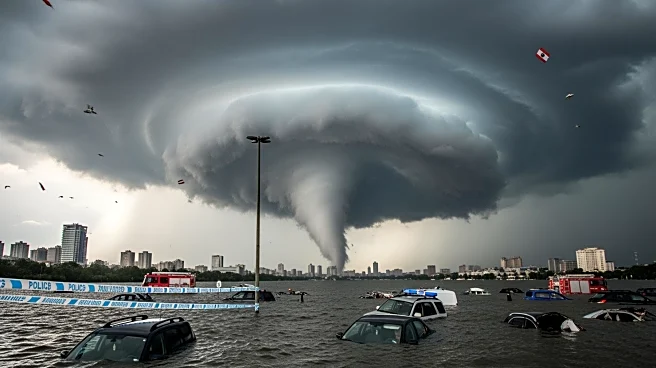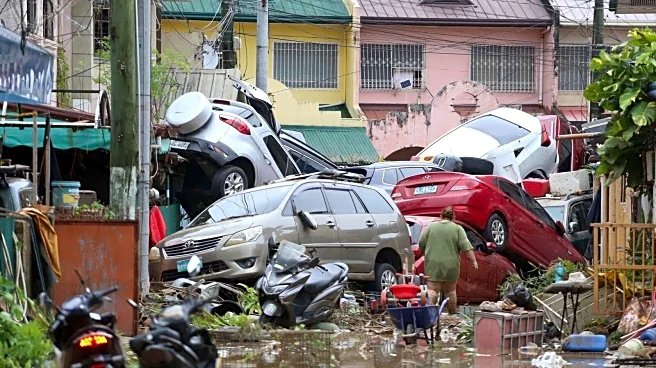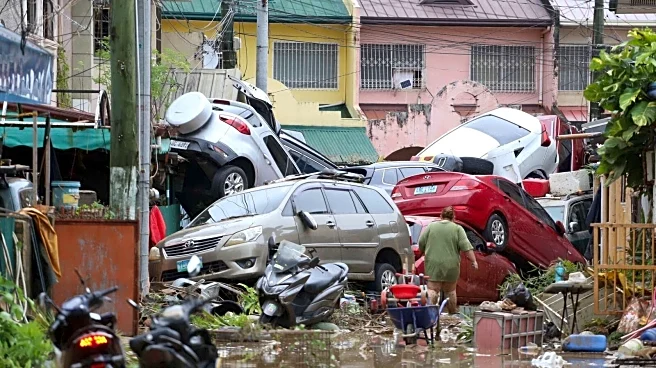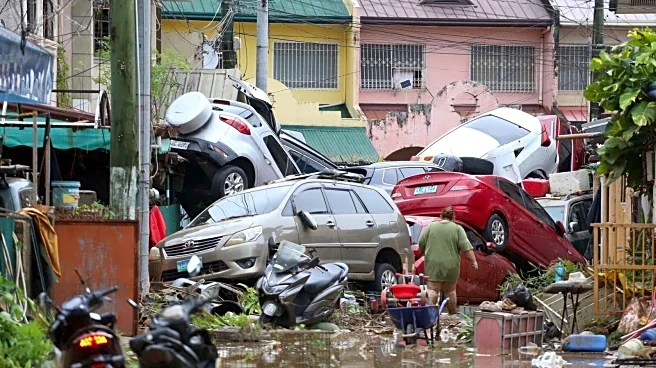What's Happening?
Typhoon Kalmaegi has resulted in at least five deaths in the Philippines, with significant flooding affecting central regions. The typhoon has caused widespread evacuations, with over 387,000 people moving
to safer areas in eastern and central provinces. In Cebu province, three fatalities were reported due to flooding, while other areas experienced severe weather conditions, including strong winds and power outages. A Philippine air force helicopter, carrying five personnel, crashed while en route to assist in relief efforts, further complicating the response to the disaster. The typhoon is expected to move into the South China Sea soon.
Why It's Important?
The impact of Typhoon Kalmaegi highlights the vulnerability of the Philippines to natural disasters, as the country experiences around 20 typhoons annually. The flooding and evacuations underscore the challenges faced by local authorities in managing disaster response and ensuring public safety. The crash of the military helicopter adds to the logistical difficulties in providing timely aid to affected areas. The situation also raises concerns about infrastructure resilience and the need for effective disaster preparedness strategies in the region.
What's Next?
As Typhoon Kalmaegi moves towards the South China Sea, relief efforts are expected to intensify in the affected regions. Authorities will likely focus on providing immediate assistance to those displaced and addressing infrastructure damage. The government may also review and enhance disaster response protocols to better handle future emergencies. International aid and support could play a role in the recovery process, as the Philippines continues to deal with the aftermath of the typhoon.
Beyond the Headlines
The recurring nature of such natural disasters in the Philippines points to broader issues of climate change and its impact on weather patterns. The increased frequency and intensity of storms may necessitate long-term policy changes and investment in sustainable infrastructure. Additionally, the cultural and social resilience of communities in disaster-prone areas will be crucial in adapting to these challenges.












